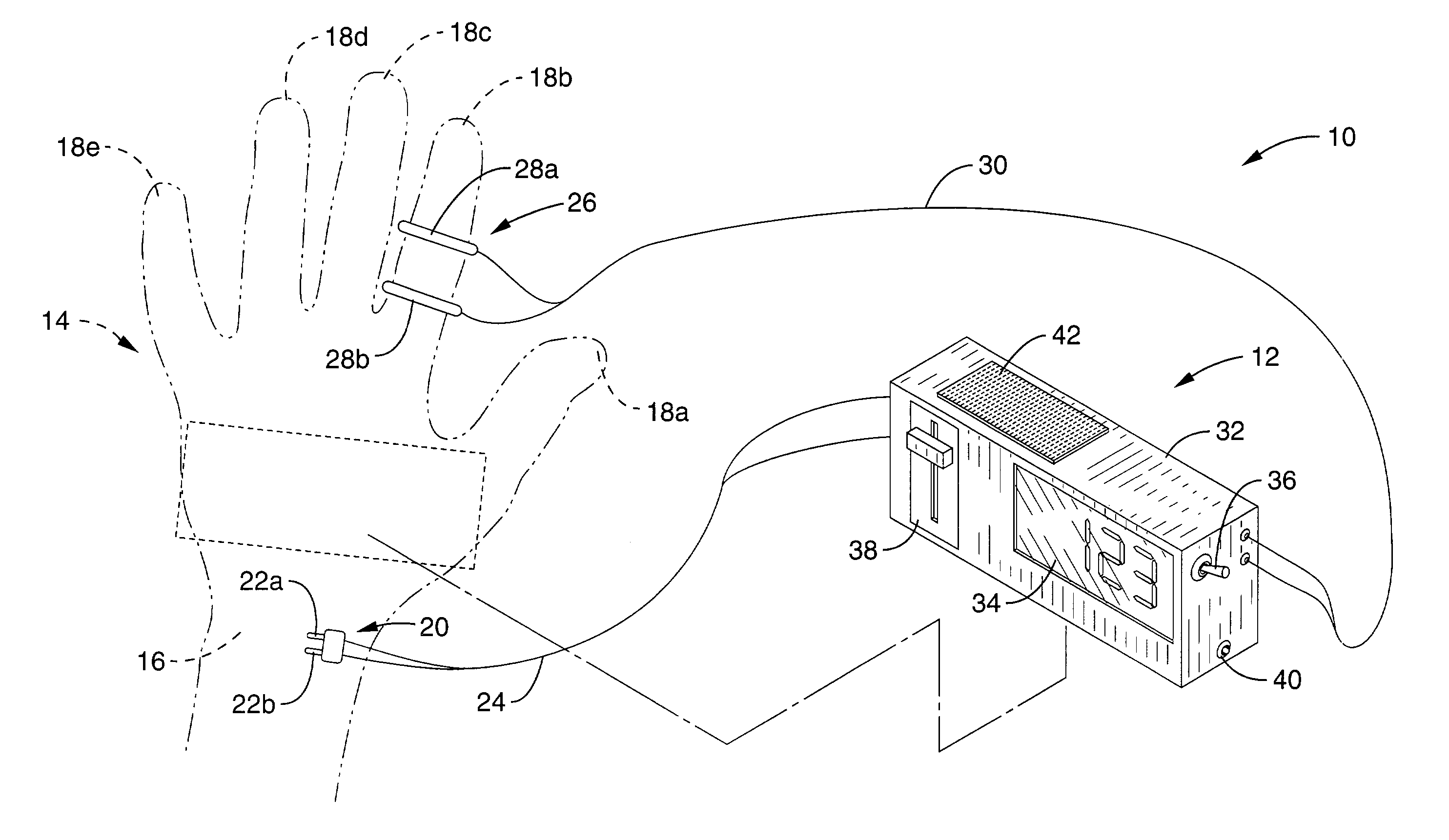Method and apparatus for self-diagnostic evaluation of nerve sensory latency
a technology of sensory latency and self-diagnostic evaluation, which is applied in the field of neurological diagnostic techniques, can solve the problems of concomitant economic costs, reduced worker and industrial productivity, and limited use of the expense of purchasing and using these devices
- Summary
- Abstract
- Description
- Claims
- Application Information
AI Technical Summary
Benefits of technology
Problems solved by technology
Method used
Image
Examples
Embodiment Construction
[0030]Referring more specifically to the drawings, for illustrative purposes the present invention is embodied in the apparatus generally shown in FIG. 1 through FIG. 7. It will be appreciated that the apparatus may vary as to configuration and as to details of the parts, and that the method may vary as to the specific steps and sequence, without departing from the basic concepts as disclosed herein.
[0031]Referring first to FIG. 1, a self-diagnostic nerve sensory latency apparatus 10 according to the present invention is shown connected to a user for measuring carpal tunnel prolongation. The apparatus 10 is shown with a base unit 12 connected to the hand 14 of a user performing a self-examination. The apparatus is preferably held in the hand 14 of the user to provide beneficial grounding (a neutral), for improved measurement accuracy. The hand 14 (shown in phantom along with intended apparatus positioning) of the user is shown with wrist 16 along with thumb 18a and fingers 18b throu...
PUM
 Login to View More
Login to View More Abstract
Description
Claims
Application Information
 Login to View More
Login to View More - R&D
- Intellectual Property
- Life Sciences
- Materials
- Tech Scout
- Unparalleled Data Quality
- Higher Quality Content
- 60% Fewer Hallucinations
Browse by: Latest US Patents, China's latest patents, Technical Efficacy Thesaurus, Application Domain, Technology Topic, Popular Technical Reports.
© 2025 PatSnap. All rights reserved.Legal|Privacy policy|Modern Slavery Act Transparency Statement|Sitemap|About US| Contact US: help@patsnap.com



